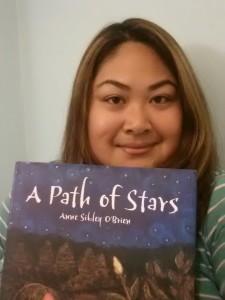by Christina Nhek
My parents were always pushing for all of my siblings and me to “go to school and get an education.” Being the “good” daughter that I was, I did what was expected of me. I never once questioned my parents and their motives behind their views on education. I just went to school and got good grades. I grew up in Long Beach, California, where we have the largest concentration of Cambodians outside of Southeast Asia. I assumed that many of my ethnic peers were heeding educational demands from their parents and family. I mean, my parents came from a war-torn country and migrated to the United States, hoping to provide a better life for their children. In theory, this sounds like many immigrants stories, from various origins and backgrounds. Being first-generation Cambodian American, I wanted to rise to the occasion.
Finishing college was always a given. People got degrees all the time, right? It never occurred to me that, as I breezed through my undergraduate years, the majority of my ethnic peers did not graduate from high school. According to U.S. Census Bureau estimates from 2006-2010, “only 13 percent of Cambodian-Americans in Los Angeles County have a bachelor’s degree or higher, compared with 47 percent of Chinese residents and 44 percent of Caucasians” (quoted from Hinojosa, 2014). I was made more aware of these alarming statistics when PBS broadcasted a documentary episode called “Pass or Fail in Cambodia Town.” In the episode, investigative reporter Maria Hinojosa discusses how Asian Americans are the best-educated and highest-income ethnic group in the United States. They are often referred to as the “model minority,” suggesting that all Asian Americans are successful in school and in life. But Southeast Asian Americans have some of the lowest high school completion rates in the nation. The documentary notes that 35.5 percent of Cambodian adults do not have a high school diploma or equivalent (Hinojosa, 2014). I was floored. I asked myself, how could this be? Many of my friends graduated high school like I did. Where did these statistics come from? As I continued my educational journey through college and graduate school, I reflected on my background and I used it as a catalyst to further my studies.
America By The Numbers: Pass or Fail in Cambodia Town Trailer from The Futuro Media Group on Vimeo.
I came to understand that I fell into the stereotypes that are associated with mainstream Asian Americans. My family came to the U.S. to give their children better opportunities. I had an educational standard I adhered to because of the expectations of my parents. I needed to succeed. What I failed to recognize, however, is the fact that as Cambodian American, I am not part of mainstream Asian American communities. Growing up, I felt I had to defend or point out that I wasn’t Chinese or Filipino. Oftentimes, when I corrected people about my ethnicity, they didn’t readily recognize or know where Cambodia is. Unlike other established Asian American communities, Cambodian Americans have a history that is relatively new, as most Cambodian immigrants arrived only in the late 1970s. Wallitt (2008) stresses this point further: “While most modern immigration to the United States consists of voluntary migrants in search of better socioeconomic lives for themselves and their families, Cambodian Americans, in contrast, were refugees who were dislocated by genocide, starvation, and war.” The “elite” of the country—the wealthy, educated Khmer, including those who were trained at passing on Cambodian tradition and knowledge—were executed, as were their families. Those murdered included the intellectuals, teachers, artists, dancers, writers, doctors, politicians, and monks (Wallitt, 2008).
I did see fewer Cambodian Americans as I attended college. When I started graduate school, I was the only Southeast Asian student in my department at Illinois.
There is a great generational gap that also divides the community. Along with having to assimilate into a new culture, there is a silence that stretches between older and younger Cambodians. The war is something that many older Cambodians do not discuss with the younger generation. The older group tends to hold on to their cultural customs and the younger group is intent on learning American ways. This makes it hard for both sides to come to an understanding. This rift between generations affects the children of refugees and, in turn, their educational goals. In “Cambodian Americans and Education: Understanding the Intersections Between Cultural Tradition and U.S. Schooling,” Akiba (2010) notes that Cambodian Americans have unique sociohistorical and political characteristics and are often associated with academic underachievements. Wallitt (2008) also points out that “what is further complicating the situation is the parents’ lack of knowledge about the American educational system.” An American Educational Research Association article published in December 2007, written by Ngo and Lee, explores the struggles of Southeast Asian groups and finds that many refugees had lower English proficiency, less experience with formal education, and also fewer transferrable skills. Ngo and Lee (2007) further assert that most Cambodian American students in K-12 schools today are born and raised in the United States and many struggle with language learning. Compared to Vietnamese Americans and Hmong Americans, Cambodian Americans appear to score lower on standardized tests and earn relatively low grade point averages (Chhuon, Hudley & Macias, 2006). Poverty has been identified as a particularly significant barrier to academic success for Cambodia American students (Ngo & Lee, 2007). “Cambodian-American College Students: Cultural Values and Multiple Worlds,” written by Chhuon, Hudley, and Macias in 2006, reviews literature on the reality of underachievement of the Cambodian American population. In the article, the authors cite various sources and found that “[p]olicymakers usually overlook Cambodian students as a unique ethnic group, attending instead to the positive statistics that aggregate Asian-American students into a single group of successful students” (Chhuon, Hudley & Macias, 2006).
I speak for myself when I say that my parents’ emphasis on education was my foundation. I am disheartened to learn that many of my people have not attained the same results. Growing up in Long Beach, California, I recall there were a lot of people like me. We all went to school, shopped at our local Cambodian grocery stores, dined at the same ethnic restaurants, and yet who knew what really happened in the privacy of their own homes. For as long as I can remember, my parents kept telling me that I needed an education to improve my lot in life. I listened to their advice intently and took it. At the same time, I did see fewer Cambodian Americans as I attended college. When I started graduate school, I was the only Southeast Asian student in my department at Illinois.
As I continued on with my studies, I felt the growing need to give back to and empower my community. Because I was beginning to see the impact and lack of education standards within my community, I decided to be committed to at least trying to improve the image of Cambodian Americans. I focused my studies in archives and public librarianship. By being ensconced in the public library sphere, I am able to work with and assess the needs of the community. I wish to bring a ray of light and hope to those who are not able to help themselves and to continue to share my story and experiences. In a Long Beach Press Telegram article, Dulaney (2015) writes that “in 2010, the Chancellor’s Office of the CSU (California State University system) brought together Asian-American Pacific Islander community leaders to talk about strategies for reaching young people. The result was the Journey to Success program to educate AAPI students and parents about college and financial aid.” It is encouraging to know that universities like California State University, Long Beach are now acknowledging specific, unique issues faced by Southeast Asian Americans by initiating changes and are lobbying support for future educational needs of Cambodian American students.

Christina Nhek, M.S., 2014
University of Illinois at Urbana-Champaign, Graduate School of Library & Information Science
Editing assistance provided by Molly Higgins and Alyssa Jocson Porter.
Resources
Akiba, D. (2010). Cambodian Americans and education: Understanding the intersections between cultural tradition and U.S. schooling. Educational Forum, 74(4), 328-333. doi: 10.1080/00131725.2010.507117
Chhuon, V., & Hudley, C. (2011). Ethnic and panethnic Asian American identities: Contradictory perceptions of Cambodian students in urban schools. The Urban Review, 43(5), 681-701. doi: 10.1007/s11256-010-0172-8
Chhuon, V., Hudley, C., & Macias, R. (2006). Cambodian-American college students: Cultural values and multiple worlds. Paper presented at the Annual Meeting Meeting of the American Educational Research Association (AERA). San Francisco, CA. Retrieved from ERIC: http://eric.ed.gov/?id=ED492597
Dulaney, J. (2015, Jan. 19). Why Cal State Long Beach officials are lobbying support for Cambodian students. Long Beach Press Telegram. Retrieved from: http://www.presstelegram.com/social-affairs/20150119/why-cal-state-long-beach-officials-are-lobbying-support-for-cambodian-students
Hinojosa, M. (Anchor, Executive Producer & Managing Editor). (2014, Nov. 6). Pass or fail in Cambodia town [Television series episode]. In America by The Numbers with Maria Hinojosa. Boston, MA: WGBH.
Ngo, B., & Lee, S. J. (2007). Complicating the image of model minority success: A review of Southeast Asian American education. Review of Educational Research, 77(4), 415-453. Retrieved from: http://www.jstor.org/stable/4624907
Wallitt, R. (2008). Cambodian invisibility: Students lost between the “achievement gap” and the “model minority.” Multicultural Perspectives, 10(1), 3-9. doi: 10.1080/15210960701869298

